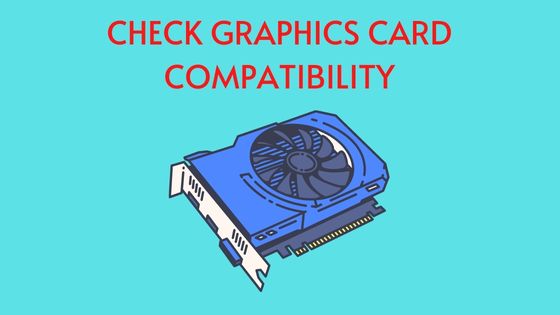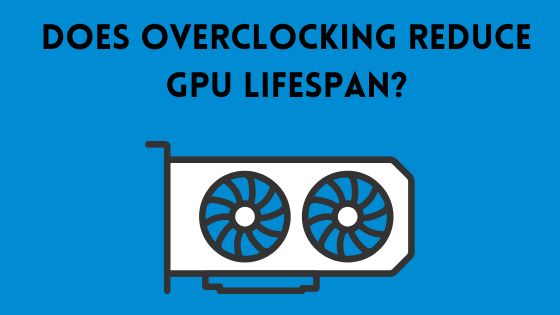Installing NVIDIA CUDA Toolkit on Windows and Mac
The NVIDIA CUDA Toolkit is an essential software platform for anyone looking to unlock the immense parallel processing power of NVIDIA GPUs.
Whether you are a researcher leveraging GPU-acceleration for cutting-edge deep learning or a developer harnessing GPU computing for simulations, 3D rendering, and other computational workloads, installing the CUDA Toolkit is the first step to supercharge your work.
In this comprehensive guide, we will cover everything you need to know to properly install the latest version of the NVIDIA CUDA Toolkit on Linux, Windows and macOS systems.
What is NVIDIA CUDA Toolkit?
The NVIDIA CUDA Toolkit provides a development environment for creating high performance GPU-accelerated applications. It allows developers to harness the parallel processing capabilities of NVIDIA GPUs for significant performance improvements compared to CPU-only workflows.
Here are some of the key components included in the CUDA Toolkit:
- CUDA Driver API and Runtime: This enables direct access to the GPU’s virtual instruction set and parallel computational elements.
- Compilers: NVCC compiler for CUDA C/C++ programming. OpenACC, OpenMP, and MPI support.
- Math Libraries: BLAS, FFT, RNG, and other GPU-accelerated math libraries.
- Development Tools: NVIDIA Nsight IDE, debugger, profiler and more.
- Code Samples and Documentation: Everything you need to start CUDA development.
By providing essential GPU acceleration enablers like the CUDA parallel computing platform and programming model, the CUDA Toolkit empowers developers to solve complex computational challenges faster and more efficiently.
Key Benefits of the CUDA Toolkit
- Achieve massive performance improvements with parallel processing on GPUs.
- Write CUDA C/C++ code for GPU acceleration without specialized skills.
- Port existing C/C++ code to run on GPUs.
- Analyze and optimize CUDA applications for maximal efficiency.
- Develop, debug and profile seamlessly in familiar environments.
Who Should Install the CUDA Toolkit?
The CUDA Toolkit is designed for software developers, researchers and data scientists who want to leverage NVIDIA GPUs for high performance computing and deep learning applications.
Whether you are accelerating a computational fluid dynamics simulation, training neural networks, running molecular dynamics simulations or deploying any other GPU-accelerated workload, installing the CUDA Toolkit is the first step to harness advanced parallel computing capabilities.
Now that you understand the immense value that the CUDA Toolkit delivers, let’s get into the specific steps you need to follow to properly install it on your system.
How to Install NVIDIA CUDA Toolkit?
The CUDA Toolkit is supported on most modern Linux distributions, Windows 7 or later and macOS 10.13 or later. I will cover the detailed instructions for installation on these operating systems.
Linux Installation
Most Linux distributions include CUDA in their package manager repositories. This makes installing the CUDA Toolkit very straightforward.
Here are the steps to install the latest version of the CUDA Toolkit on Linux:
Step 1: Verify System Requirements
- A desktop or workstation with NVIDIA GPU with CUDA compute capability 3.0 or higher.
- 64-bit Linux distribution with a glibc version later than 2.17. Consult the CUDA Installation Guide for specific version requirements.
- gcc compiler and toolchain.
- Up-to-date NVIDIA graphics drivers.
Step 2: Download the CUDA Toolkit
- Go to the CUDA Toolkit download page: https://developer.nvidia.com/cuda-downloads
- Choose the right package for your Linux distribution. For example, Ubuntu 18.04 would require:
cuda-repo-ubuntu1804-10-2-local-10.2.89-440.33.01_1.0-1_amd64.deb- Download the installer to your machine.
Step 3: Install the CUDA Toolkit
- Open a terminal and navigate to the download directory.
- Install the downloaded package with
sudo dpkg -i [package name]. - Follow the on-screen prompts. Accept EULA and install the CUDA Toolkit components.
- The installation process will automatically attempt to install the NVIDIA graphics driver if a CUDA compatible version is not already present.
Step 4: Verify the Installation
- To verify that CUDA is installed and working correctly, compile and run a CUDA sample program:
cd /usr/local/cuda/samples/1_Utilities/deviceQuery
make
./deviceQuery- This runs a small CUDA program to verify CUDA capabilites. If installed correctly, it will show detected NVIDIA GPUs and capabilities.
The CUDA Toolkit is now installed and ready to use! You can start writing your own CUDA programs or porting existing computational workloads to run on NVIDIA GPUs.
Windows Installation
On Windows platforms, the most straightforward method to install the CUDA Toolkit is by using the standalone Windows installer from NVIDIA.
Follow these steps for smooth installation on Windows:
Step 1: Verify System Requirements
- A desktop or notebook PC with NVIDIA GPU with CUDA compute capability 3.0 or higher.
- 64-bit version of Windows 7 or later. Windows 10/11 recommended.
- Visual Studio IDE installed. Visual Studio 2019 recommended.
- Latest NVIDIA graphics driver compatible with CUDA.
Step 2: Download the CUDA Toolkit
- Get the Windows CUDA Toolkit installer from:
https://developer.nvidia.com/cuda-downloads - Choose the
exenetwork installer for Windows x86_64. - Download the installer to your machine.
Step 3: Install the CUDA Toolkit
- Double click the downloaded
exeinstaller file. - Click through the NVIDIA license agreement. Select accept and continue.
- Select the components to install:
- CUDA Toolkit
- CUDA Samples
- Visual Studio Integration (optional but recommended)
- NVIDIA Display Driver (if compatible version not already installed)
- Click Install to begin the installation process.
Step 4: Verify the Installation
- Launch Visual Studio and create a new CUDA C/C++ project.
- Try compiling and running one of the CUDA samples.
- For example, the
deviceQuerysample prints information about the CUDA-enabled GPUs on the system.
With the CUDA Toolkit properly installed, you can commence CUDA application development on the Windows platform.
macOS Installation
On macOS, the CUDA Toolkit is provided as a DMG installer image containing the toolkit, samples and necessary drivers.
Follow these instructions to install the CUDA Toolkit on macOS:
Step 1: Verify System Requirements
- Mac with NVIDIA GPU based on:
- Maxwell or newer GPU architecture.
- CUDA compute capability 5.0 and higher.
- macOS High Sierra 10.13 or later.
- Latest matching NVIDIA macOS graphics driver.
Step 2: Download the CUDA Toolkit
- Get the macOS CUDA Toolkit DMG installer from:
https://developer.nvidia.com/cuda-downloads - Choose the macOS installer DMG package.
- Download the installer image.
Step 3: Install the CUDA Toolkit
- Double click the DMG installer package to mount it.
- Double click the mounted volume icon to open it.
- Double click the
CUDA-Install-macOS.pkgfile to launch the installer. - Click continue and accept the license agreement.
- Follow the prompts to install the CUDA Toolkit, Samples and Driver components.
Step 4: Verify the Installation
- Open a terminal and compile and run a CUDA sample like
deviceQuery:
cd /Developer/NVIDIA/CUDA-X.Y/samples/1_Utilities/deviceQuery
make
./deviceQuery- This will confirm CUDA is correctly set up if the system’s NVIDIA GPU is detected.
With the CUDA Toolkit installed, your macOS system is now ready for serious GPU computing!
Additional Notes on CUDA Toolkit Installation
Here are some additional pointers to ensure smooth installation and operation of the CUDA Toolkit:
- When installing CUDA on a workstation or server running Linux, it is generally recommended to use the *.run package installer instead of distro-specific packages.
- On Linux/Windows, install the cuDNN libraries after CUDA for GPU acceleration of deep neural networks.
- Setup the PATH and LD_LIBRARY_PATH environment variables to point to the CUDA Toolkit install location.
- For developing CUDA applications, installing a compatible version of the NVIDIA Nsight IDE or Visual Studio IDE is highly recommended.
- When deploying CUDA applications on cloud platforms like AWS EC2 or Azure NV-series VMs, follow NVIDIA’s guides to install CUDA.
- Refer to NVIDIA’s documentation for troubleshooting guidance, advanced installation options, and other details specific to your system configuration.
Learn More and Get Started with CUDA Programming
With the CUDA Toolkit properly installed, an exciting world of GPU-accelerated computing is now open to you.
Some helpful next steps:
- Try out the CUDA Sample programs included in the Toolkit installation.
- Walk through the CUDA Programming Guide for a comprehensive tutorial.
- Refer to the official CUDA Documentation for API references and expert guides.
- Join the CUDA Developer Forums to engage with the CUDA community.
- Stay updated on the NVIDIA Developer Blog covering cutting-edge GPU computing applications.
I hope this detailed guide helped demystify the process for installing the NVIDIA CUDA Toolkit on your system. The remarkable acceleration and performance benefits unlocked by CUDA are now at your fingertips. Happy coding!
FAQ’s
Where is Nvidia CUDA toolkit installed?
The Nvidia CUDA toolkit is typically installed in the /usr/local/cuda directory on Linux, under C:\Program Files\NVIDIA GPU Computing Toolkit\CUDA on Windows, and in /Developer/NVIDIA/CUDA-X.Y on macOS.
Does Nvidia Cuda Toolkit install drivers?
Yes, the Nvidia CUDA toolkit installer can optionally install Nvidia graphics drivers if a compatible version is not already present on the system. It is recommended to install the latest drivers matched with your CUDA version.
How to install CUDA toolkit without Sudo?
To install the CUDA toolkit without Sudo access on Linux, download the runfile installer and execute it with the –tmpdir option pointing to a writable local directory. This will install CUDA toolkit components in your user folder.
Is CUDA and CUDA toolkit the same?
CUDA refers to Nvidia’s parallel computing platform and API. The CUDA toolkit is the software development package from Nvidia that provides libraries, compiler, tools and samples to build CUDA applications.
How do I enable CUDA?
To enable CUDA, install a compatible Nvidia graphics driver, install the CUDA toolkit, configure the PATH and LD_LIBRARY_PATH to include the CUDA install directories, and verify by running CUDA sample programs.
Is CUDA a CPU or GPU?
CUDA is Nvidia’s API and platform to utilize the parallel processing capabilities of Nvidia GPUs. It allows compute intensive tasks to be offloaded from the CPU to the GPU.
Do all GPUs have CUDA?
No, only Nvidia GPUs designed for general purpose GPU computing support the CUDA platform. AMD and Intel GPUs do not support CUDA.
Can CUDA run on AMD graphics?
No, CUDA only runs on Nvidia GPUs. For AMD GPUs, OpenCL is the alternative to CUDA for GPGPU computing





